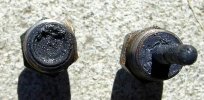Trogdor
Pre-takeoff checklist
Plane is a 1977 Dakota PA28-236 and in order to start the O540 in it, the plane needs like 8 primes to get it going. I find this very strange. Yes, I wait for the bowl to fill and yes, it will start with three chugs of the manifold while cranking (and yes, I don’t want to start a fire).
Anyone know why a Dakota would need so many primes? I’ve asked the A&P to inspect the O-rings on the primer itself thinking that maybe I’m not getting a full spray when the bowl fills. But they say it looks fine. POH says 3 primes (and only when it doesn’t start) to get this baby going.
Any clue?
Anyone know why a Dakota would need so many primes? I’ve asked the A&P to inspect the O-rings on the primer itself thinking that maybe I’m not getting a full spray when the bowl fills. But they say it looks fine. POH says 3 primes (and only when it doesn’t start) to get this baby going.
Any clue?

